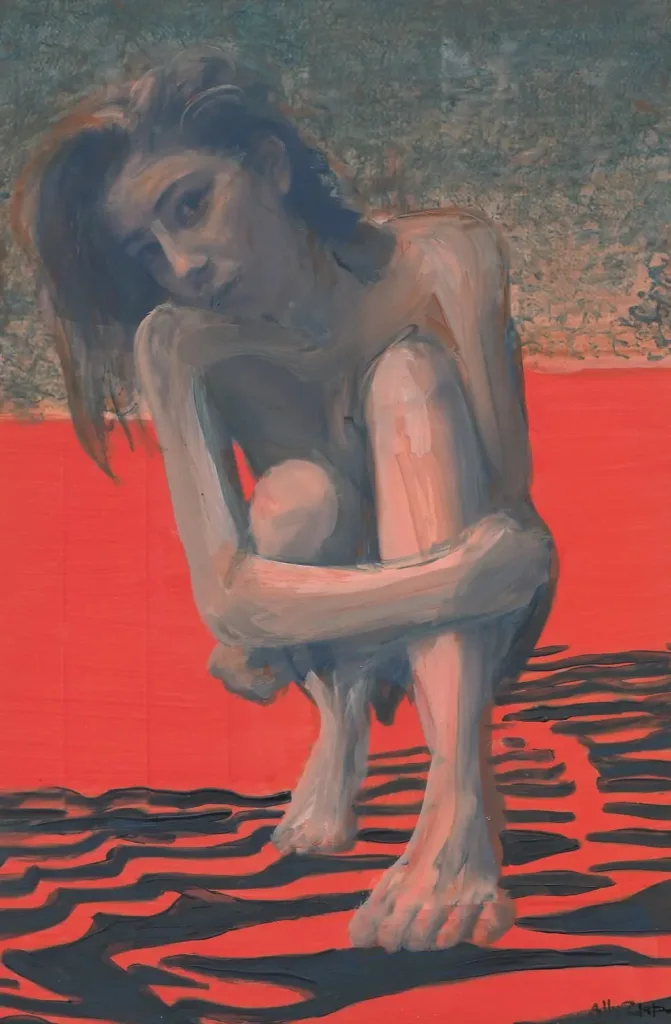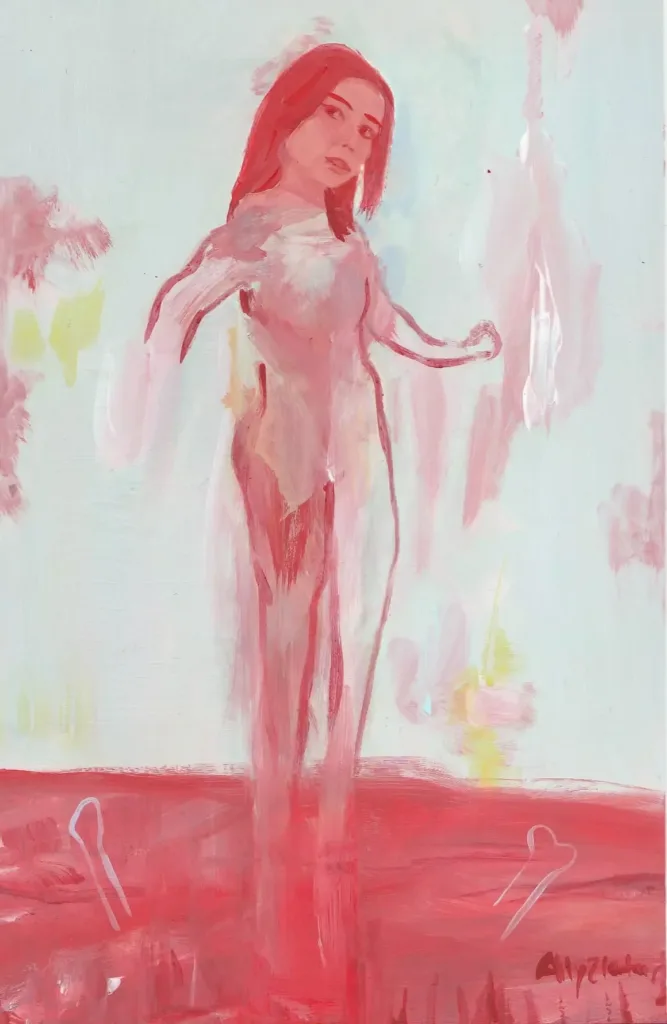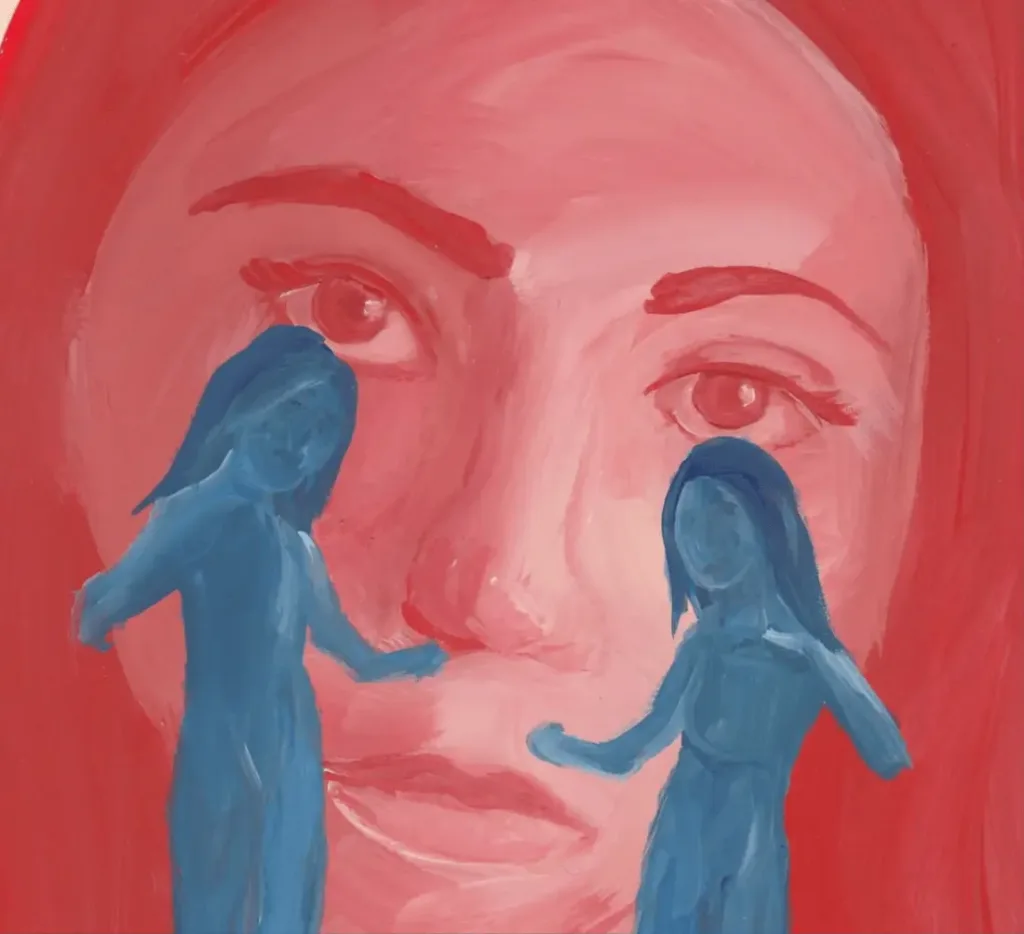What is People Watched But Could Not and how did it come about?
People Watched But Could Not See (from The Starving Artist) is a series of autoethnographic acrylic painted portraits that capture the enigmatic depths of mental deterioration and dementia, revealing the hidden facets of this complex and challenging reality. People see the person, but they do not understand the depths of the struggle, the loss of identity, control, and belonging, and the immense untold suffering that comes with dementia.
Who initially inspired you to grapple with dementia?
I aim to inspire others to be more open and vulnerable regarding the impacts and diverse experiences of people living with memory loss, which I experienced through my step-father’s early diagnosis of dementia.
My own struggles with serious illness have been hard for me to process. As someone who sees the immense effects, I felt powerless to do anything to help. Through art, I was able to explore, examine, and reflect on the challenging experiences both of us were having.






How has working on dementia-related art changed you?
Art for me has a profound impact on my comprehension and dissemination of the challenges encountered by individuals in their personal journeys, especially with my exploration of my step-father’s dementia journey. I am committed to establishing and nurturing networks that enable artists and individuals to navigate and articulate lived experiences, surpassing cultural obstacles encompassing language, education, and resource availability. Especially for those with dementia, art has emerged as a potent instrument for advocating for and amplifying lived experiences, fostering avenues for expression, delving into personal well-being, and surmounting systemic barriers, in my opinion.
How has People Watched But Could Not been received?
Individuals who have lived experiences with dementia and serious illness engage with my art on a very personal level. This fosters discussion and encourages sharing of their own experiences. Sometimes they find safety and comfort in the art, knowing they are not alone. The art communicates their struggles and promotes further discussion. Those outside of the lived experiences also gain insight into the struggles of loved ones, broaden their perspectives, and learn more about how to support their loved ones and communities struggling at large. Art fosters empathy, understanding, and positive change.
This work is dedicated to: my step-father’s experience with early-onset dementia
Find more from Ally Zlatar on her website and on Instagram.















